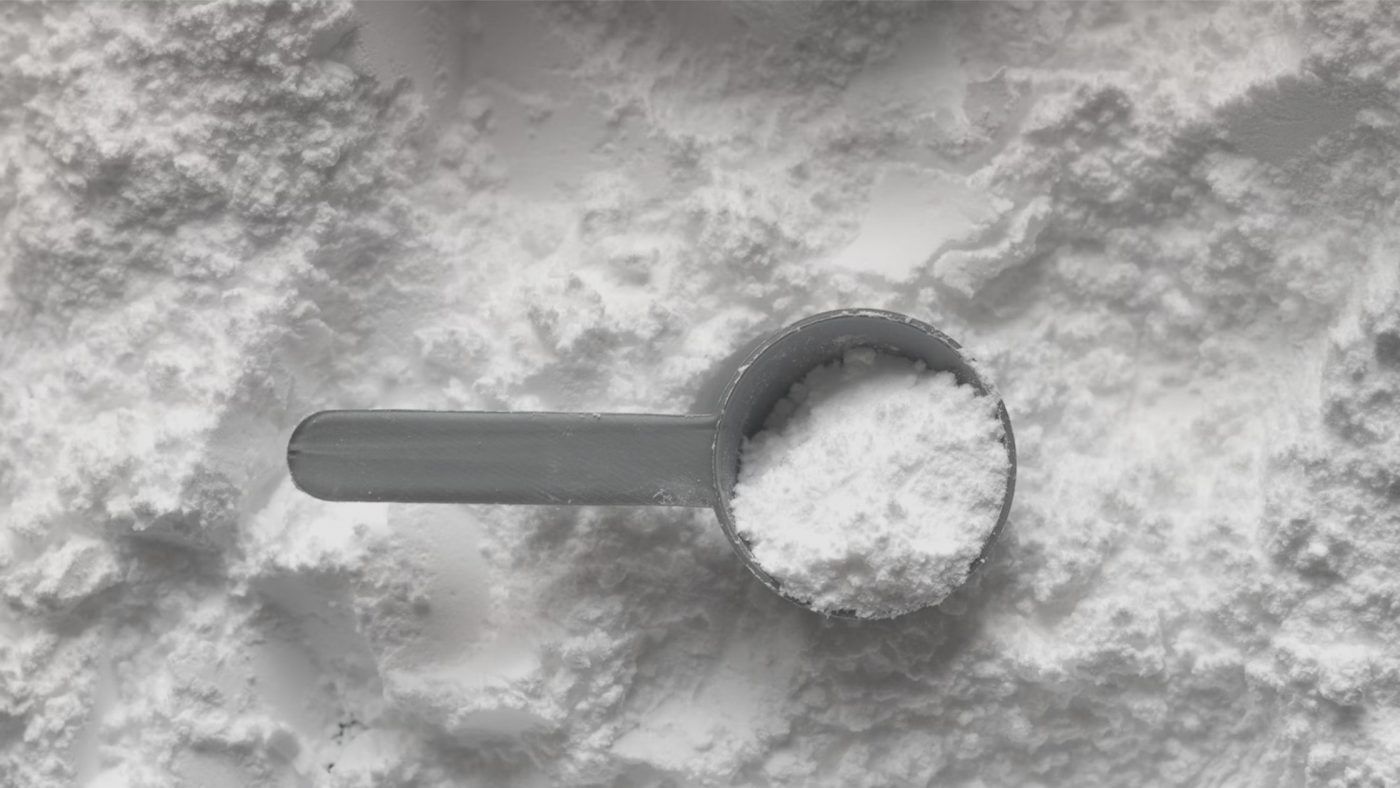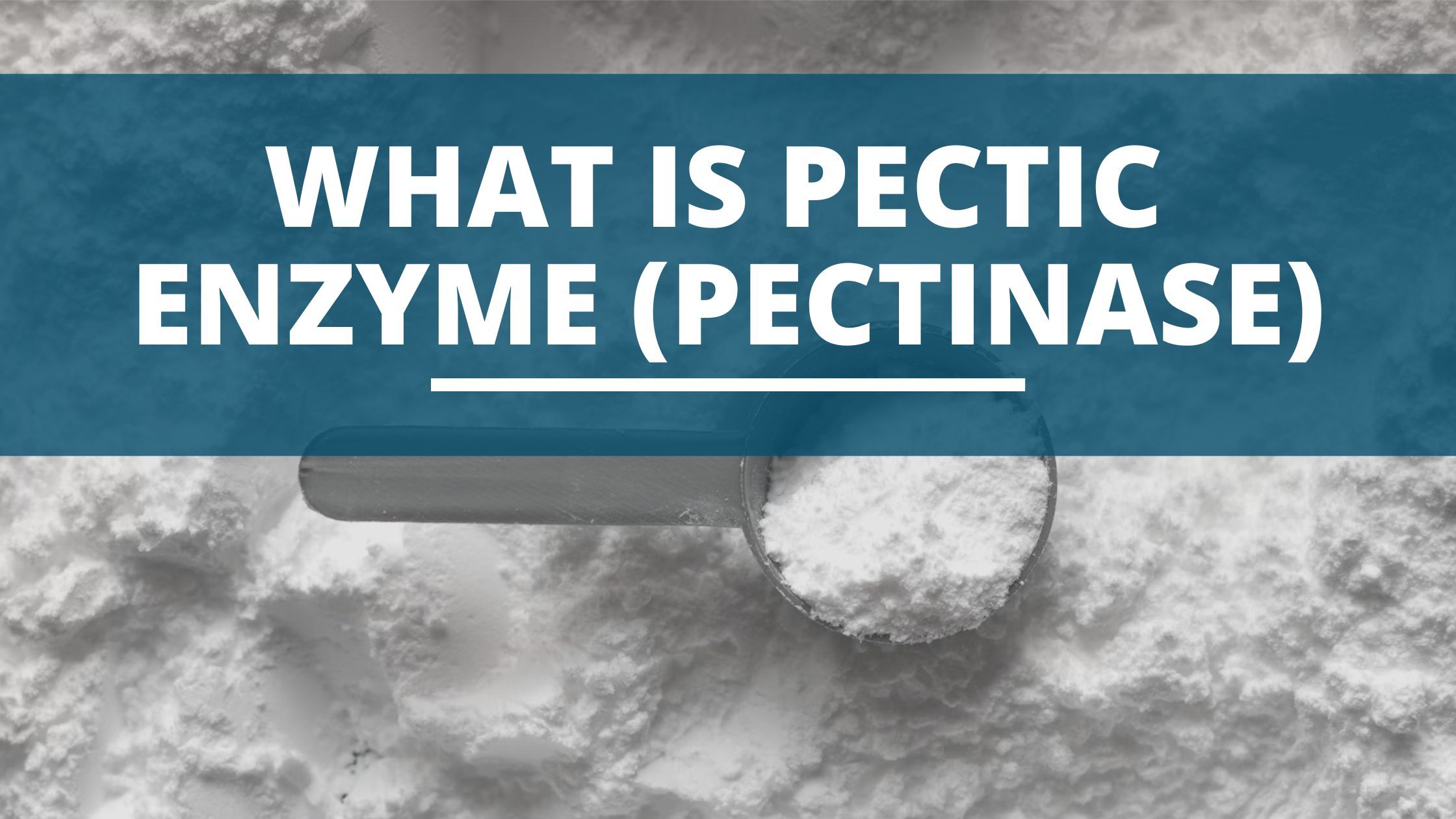Enzymes and Additives, Ingredients
What Is Pectic Enzyme (Pectinase) And Why You Need It!
There are instances where you would employ the use of pectic enzymes, and one of those is when you’re distilling or brewing fruit-based spirits. Though some home brewers are on the fence about whether or not to use it – citing that a hazy look is nothing to concern yourself about, knowing you can achieve a clear, good quality drink is worth investing in the enzyme.
Pectic enzyme is a protein that breaks down pectin – fruit cell structure – allowing you to yield more juice, flavor, color, and alcohol. With this in mind, we’re sure you’d agree that it’s a godsend for brewers and distillers alike.
This article discusses the relationship between pectin and pectic enzyme when a situation calls for the use of the catalyst, and tips on how to use it.
Table of Contents
What Does Pectic Enzyme Do?
To make the most of your fruit – to release a lot of the juice, it’s best to introduce an enzyme to break down the cellular walls of the produce you’re using. This is where pectic enzyme comes in. Below is an explanation of the relationship between pectin and pectic enzyme.
Pectin
Pectin is a naturally occurring carbohydrate (polysaccharide) that holds the fruit fiber and plant cells together. When the fruit is cooked, pectin gets activated and forms a gel. The substance also gives a cloudy appearance to fruit juice.
This haze is often frowned upon in winemaking, brewing, and distilling, so alcoholic beverage makers add a protein called pectic enzyme, to eliminate any cloudiness and reduce the methanol content of their final product.
Pectic enzyme
A pectic enzyme, also known as pectinase, is a protein that breaks down pectin in the fruit. Commercial enzymes are produced from the fungi Aspergillus niger through a process called solid-state fermentation.
It prevents the cloudiness in alcoholic beverages like mead and makes the haze-causing fiber settle at the bottom of a fermenter. Adding pectic enzyme is not only limited to clearing alcoholic beverages. It also increases the juice, color, sugar, and flavoring of your alcohol.

When Is Pectic Enzyme Necessary
When using fruit as a base for your alcohol, adding pectic enzymes is always recommended. Below are instances that would call for the use of this enzyme.
1. Winemaking
Wines are generally made from fruit, and because fruit has pectin, adding pectic enzyme eliminates any hazy surprises you might encounter in your final drink. Even though some fruit like grapes and strawberries have low pectin levels and might not create cloudiness in your final product, err on the safe side and add the enzyme.
Haze is not the only reason winemakers use the enzyme. An article published in the National Center for Biotechnology Information found that the enzyme assists in clarifying and filtering the must, as well as extracting the juice, color, and aromas from the fruit.
2. Brewing
When making fruit beer, pectic enzyme helps in keeping the haze at bay. As with winemaking, it also helps with flavor and color extraction.
3. Distilling spirits
Some spirits, like brandy, are made from plums. When using fruit as a base, distillers often wind up with a spirit that has a high methanol concentration. To combat this, they add pectic enzyme. Not only does the enzyme yield a lot of juice, but it also removes some traces of methanol found in the wash and yields more usable alcohol.
Where To Buy Pectic Enzyme
A lot of homebrew suppliers and retailers sell pectic enzyme, so it’s easy to get your hands on the product. Pectinase comes in two forms: liquid and powder. Here’s an explanation of the two and where to buy them.
1. Powder Pectic Enzyme
A packet of the powdered enzyme (1oz) treats up to 12 gallons (45 liters) of wash. The enzyme has a long shelf life and its effectiveness remains consistent even when unrefrigerated.
2. Liquid Pectic Enzyme
A liquid enzyme is very concentrated so it requires a small amount for it to be effective – ½ oz bottle can treat up to 60 gallons (227 liters) of wash. It has a short shelf life and its enzymes can get deactivated when the product is not refrigerated.
Our Recommendation:
If you’re brewing or distilling small batches at a time, a powdered enzyme is the way to go. You can use the amount the recipe calls for and still have some leftover for your next brew day. But if you intend on fermenting multiple batches (up to 60 gallons) in succession, it’s best to opt for the liquid enzyme because a little goes a long way.
How To Use Pectic Enzyme?
As a general rule, you should add pectic enzymes before fermentation. Adding it when your wash has started fermenting reduces its effectiveness and results in a longer wait time for the alcohol to clear, which can get quite frustrating. It’s best to add the pectic enzyme to the crushed fruit before it’s pressed because this increases the juice yield and produces a clearer final product.
How Much Pectic Enzyme To Use?
Here’s a guide on how much enzyme to use when you’re making wine, beer, or spirits. These instructions are for 5 gallons (18 liters) of wash.
Step-by-step instructions:
- Crush your fruit.
- Pour them into a fermenter.
- Dissolve 1 ½ -2 teaspoons of pectic enzyme in water.
- Add the enzyme to the fruit, stir and let it sit for a minimum of 12 hours.
- If you’re using liquid enzyme, add 6-8 drops into your bucket, and let it sit for a minimum of 12 hours.
- Add your yeast and ferment as normal.
NOTE: Use the enzyme at room temperature. It gets deactivated when exposed to too high or low a temperature and in the presence of alcohol.
Frequently Asked Questions
Q. Is pectic enzyme safe?
Pectic enzyme is safe to use. A study on rats found that the enzyme doesn’t pose any danger to humans when used in food production.
Q. What is a natural pectic enzyme?
A natural pectic enzyme can be found in papaya peels. The green layer under the skin of the fruit contains a natural pectic enzyme. If you plan to use this in place of the pectinase, use a peeling of half a papaya as a substitute for 1 teaspoon of pectic enzyme. It’s important to note that sometimes it may not be as effective as the store-bought pectic enzyme.
Q. Can you use pectic enzyme with Campden tablets?
You can use Campden tablets with pectic enzyme. Adding tablets is an effective way to eradicate the possibility of bacterial growth. To harness the effectiveness of the enzyme, it’s best to add the tablets and let your must, wash, or mash sit for up to 12 hours.
The pectic enzyme gets deactivated when it comes in contact with sulfur dioxide found in the tablets. Then you can add the pectic enzyme when the said time has lapsed.
Conclusion
Though a cloudy alcoholic beverage is not necessarily a bad thing, it’s sometimes not attractive to look at. Pectic enzyme lets you fully control how your final product turns out. Besides clearing your drink, it’s packed with other benefits like extracting the desired flavor, color, and usable alcohol from the fruit you’re using. Whether you choose to go for the liquid or powdered form of the product, it’s convenient in that it caters to your fruity brew day situations.








